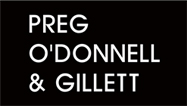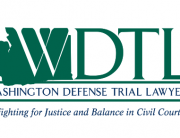by Eric Gillett, Managing Partner
Published in the King County Bar Association’s BAR Bulletin’s monthly column “Spotlight on Mediation: Strategies for Success”.
February, 2023
Mediation is the art of compromise. Mediation is also the science of how people act with one another. Mediation requires us to believe what we say and to recognize that those on the other side of our dispute believe what they say. For mediation to be successful and to end with a settlement, you may also be required to believe that your opponent may be right and you may be wrong. The rub, the difficulty, is finding where your tolerance lies for the risk you may be wrong.
One absolute in litigation is that the fact finder, normally a jury, is not required and may not be inclined to believe you. They may also not be inclined to believe your opponent. And the instructions they are given by the court do not tell them to do so. The instructions they are given tell them to decide for themselves what they believe to be true based on the evidence they are presented and, based on their own life experiences, how they interpret that evidence. So, it really matters very little whether you believe you are right. What matters is what they believe, and based on those beliefs, what they decide.
Some clients have a hard time understanding this nuance. As a litigator, you must make a concerted effort to explain to your clients that “truth” as we normally define that term, is not what you get in litigation. Their “truth,” your “truth,” is not what matters. It is the jury’s “truth” that defines the result. It may be cold comfort to a client to recognize that all the “truth” they hold dear matters for nothing once you put a case in the hands of a jury. Even if a jury finds for you, remind your clients, it is not necessarily because your truth prevailed. Anyone who has been on a jury or even participated in a mock jury experiment can understand that juries make many decisions based on factors you may never have anticipated, maybe not even on “facts” as you understand the facts. Your “truth” may or may not be their truth.
Once you can get this to sink in with your clients, tell them not to despair. Mediation offers the real opportunity for their truth to prevail. It may be their last opportunity in the litigation forum. When a client holds their “truth” under the light of mediation, they are given the chance to shine that light so the other side can see. Their version of the truth may be challenged, and they may feel distressed that everyone does not see the same truth. But if they are willing to accept the possibility that another point of view has validity, they may be able to find a place where the give and take of negotiation has air to breathe and a space to find a solution.
In the heat of litigation, it is easy to dehumanize our opponents, to forget that they are just people in distress or just doing their job. We may feel they have lied to us, they have tried to take advantage, or they really don’t care. Especially for an injured plaintiff, who may have no other exposure to our civil justice system, it may feel like this is a rigged game, that nothing is fair and it is outrageous that someone or something does not see what is so plainly evident to them, their pain, their loss, their injury. It is little solace in knowing the people in the other room do this for a living and have considered their case in the context of hundreds if not thousands of other cases they view as similar. Unfortunately, there is often no real place for such a plaintiff to “feel” that message is anything other than a failure to appreciate their “unique” situation.
On the other hand, the seasoned defendant risk manager or the very experienced claims adjuster can easily take the position that they know best. They may feel their experience combined with the evaluation of their well-qualified defense counsel position them to know much more about the outcome than the plaintiff or even plaintiff’s counsel.
Years ago, some insurance companies turned to “big data” to measure their case evaluations. Punch in the basic facts, including uncontested past and future medical expenses, past and future wage loss, and the type of injury and filter it through a vast amount of data recorded for other claims and a computer would provide you with a range of numbers that told you how to define a fair resolution. For some companies, this was almost gospel and claims professionals were hand tied to that evaluation absent some extraordinary reason to deviate. Unfortunately, that left little room for the art of compromise.
While I have never worked as a claims adjuster and have not been privy to the whys and wherefores behind these computer programs, it has been my experience that they have fallen out of favor by many of those who were charged to rely upon them. I say that because it has been a long time since I have heard from anyone in a mediation that this was their guiding light. So, that is a plus. But we still deal with the prejudices brought on by the experience one brings to a mediation that informs them about risk and value.
How then, as a mediator, do I overcome these self-imposed limitations on how someone thinks? The first thing I do is get to know who is in each room. That takes a lot of active listening. In a recent mediation, I spent a great deal of the morning listening to a young man tell me not only about the accident that caused his injuries but also about his recovery and maybe more importantly, his life, before and after the unfortunate event that brought him to a mediation. This may sound an awful lot like what one learns during a deposition or through written discovery, and to some extent, it is. But it is more than that. It is also my opportunity to “feel” what he is like, to sense his “truth” varnished or not. And with that new understanding, I am empowered to speak on his behalf in a non-judgmental way with people in the next room.
The second thing I do is repeat, as best I can, that process in the other room. It may not be as organic as the time spent with a plaintiff, who naturally can tell me many of the same things they were asked during a deposition and what they will be asked to explain to a jury. But it is just as important for me to know who I am dealing with on the defense side. And that is true about the defense counsel, their “client” if present, and the claims professional who is more than likely the person controlling whether and what offer is made.
This process part of mediation is incredibly important because it helps me to humanize everyone involved in the mediation. When I go back to the plaintiff and her attorney, I am much more able to keep the discussion on track because I can, if necessary, explain not only the level of expertise working in the next room but also how there are real people there, with an appreciation for what the plaintiff is going through. If I can use that information as a shield, then many unproductive discussions about how others don’t understand, can be kept at bay.
It is easy to understand how important this knowledge is when working with defendants. While defense counsel has probably spent several hours in deposition with the plaintiff and has taken their own measure of the person bringing a claim, the other decision makers may have no good sense. Their attorney’s evaluation of the plaintiff and their claim certainly informs them to some extent but having a fresh set of eyes and ears in the other room, hearing some of the same information and probably some new information as well, informs them on a deeper level who they are dealing with. And it helps them to recognize that their “truth,” the truth they have divined for themselves about this particular case may be wrong. It may help them better understand that, more importantly, a jury may find a different truth than that which they have presently used to decide what it will take to settle a case and whether to stretch a little further to bring this claim to a settlement.
The foundation for the art of compromise is, as I have said in the past, a willingness to be willing. Consider the possibility that you may be wrong. Put on a new set of glasses. Filter what you believe through those lenses and ask yourself, ask your client whether you can get this case resolved.
Eric Gillett is a founding member and managing partner at Preg, O’Donnell & Gillett. He is licensed in Washington, Oregon, and Alaska. He has tried dozens of cases to verdict. A navigator of resolutions, he is a commercial mediator and can be contacted through his legal assistant, Jasmine Reddy, at 206-287-1775 or jreddy@pregodonnell.com. You can also reach out through his website at gillettmediation.com and his email at eric@gillettmediation.com. While in person mediations can be arranged with all participants fully vaccinated, Zoom mediations are also available and encouraged.
[ Download a PDF of this article here. ]





